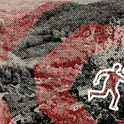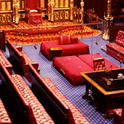New Year is a time for resolutions. There is a simple one for Labour MPs —read some political history. That is, if the Parliamentary Labour Party intends not to become part of that history.
The starting point should be Dangerfield’s Strange Death of Liberal England. This is a warning from history—no political party, however great or dominant, has a divine right to exist. Failures in leadership. Strategic errors. Events. Bad luck. Any or all of these can tear you down. Decline can be slow, with deceptive moments of return to some apparent strength and even actual power. But the lesson of British politics is that once you go, you go. The only permanent fact of party political life in Britain is the Conservative Party. Other parties come and go but the Tories in Margaret Thatcher’s phrase “go on and on”. Is that because as Robert Harris says in his book The Conservatives: a history (another one for the PLP reading list) they have an ability to include and surprise:
“Disraeli, the Jewish outsider who championed traditional institutions, [and Salisbury and Thatcher] are all in their different ways completely surprising. It matters to the country that the Conservative Party should retain its capacity to produce surprises and to harness the eccentric distinctive qualities of British national greatness.”
Or is it simply that they have always been more politically ruthless? Committed, above all else, to winning. The outrage in Labour ranks at the knighthood for Lynton Crosby would be better focused on the Labour leadership for failing to search the world to find their own electoral wizard.
Read more on the Labour Party:
What should Labour's economic policy look like?
How Corbynomics could work
Having read about the death and life of great political parties, time should be devoted to beginnings. David Howell’s British Workers and the Independent Labour Party 1888-1906 may seem a narrow canvass but it is scrupulous in detailing the work that went into the creation of a key, but ultimately failed, part of the Labour coalition. All that work and all that talent—Hardie, MacDonald, Snowden, Wheatley, Maxton and more—and despite it all, after disaffiliating, the ILP spent 43 years in the wilderness: more than half its life.
Then a biography of Attlee. Choose anything, from Kenneth O. Morgan’s biographical essay in Labour People to Nicklaus Thomas-Symonds’ 2010 biography. The point is a simple one. The lesson of Attlee is not, as Corbynistas would have it, that he was “true” to Labour’s socialist values and therefore a beacon to the irredentist left. Attlee was in fact the ultimate red Tory. He not only worked with the Tories, he actually formed a government with them. In conjunction with the great Ernie Bevin, he deposed George Lansbury, the only Labour leader in history to have looked at all like Jeremy Corbyn. The great successes of the 1945 government, the NHS and the welfare state, were drawn from a progressive centrist tradition. The great failures, including nationalization, were from the traditional left.
Finally, something from the 80s, which was the last period when the Labour Party had to be rescued from itself. Michael Crick’s Militant is still the best description of how the ultra-left organise. Dianne Hayter’s Fightback and John Goulding and Paul Farrelly’s Hammer of the Leftare “how-to” guides for defeating them.
Mind you, the lessons of that time can be summed up simply. In a slogan that is itself a resolution: “Don’t mourn, organise.”












